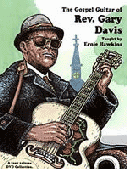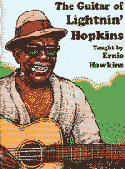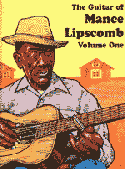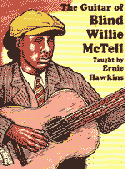

January/February, 2003
Gabriel Szternsztejn, "Gabriel Szternsztejn", Pai 3052, 2001
Argentinean acoustic jazz guitarist Gabriel Szternsztejn is flat-out incredible.
It's easy to hear from the first strains of the opening track "Tan Bien" that
Szternsztejn enjoys teasing together complex polyrhythms with melodies that soar
contagiously from the heart. He's been blessed to fall in with musical partners who
share the talent to complete Szternsztejn's intricate musical vision: Alejandro
Lamothe is on second guitar, Victor Shorupski on soprano sax, Mario Herrerias and
Gustavo Rivero Boschi on piano, Santiago Vazquez and Chulo Sarno on percussion,
synthesizer programmers Gustavo Sadofschi and Sergio Liszewski, and Alan Ballan and Fabian Martin on bass.
Many of Szternsztejn's compositions are characterized by dreamy open-string minor and
modal reflections similar to the compositions of John Abercrombie and Ralph Towner, but
often progress to become paradoxically inflected with a celebratory Brazilian exultation.
"Tanto Tiempo" is tinged such from the start, a fiery bit of exuberance made more
suspenseful by the stop-and-start of Szternsztejn's mastery of pasting together unusual
cadences. Many jazz fans, upon hearing a blindfold test of "Remar" would identify the
Pat Metheny Band. Unfortunately, Szternsztejn's virtuosity is matched only by his
obscurity. Should the world be truly attuned to rewarding talent, Szternsztejn will
be quickly known.
Gabriel Szternsztejn's Facebook
Ellis Paul "The Speed of Trees", Philo 1242 , 2002
The blurb on Ellis Paul's last studio album, "Translucent Soul", described it as "intimate."
"The Speed of Trees", we're told, has "a new sonic edge." Ellis Paul has brought in producer
and multi-instrumentalist Duke Levine, but the changes are evolutionary, not revolutionary.
Some hooks are beefed up, as in the Beatlesque chorus of "Sweet Mistakes". Levine
effectively uses familiar instrumental cues: viola for pathos ("If You Break Down"),
mandolin for nostalgia ("Eighteen"). There is a whole band sound at times: a
Rolling Stones-like arrangement for the touching "Roll Away Bed", a radio single
structure for - irony intended - "Breaking Through the Radio". But Paul has given up
none of the qualities that have made him a major figure in the world of original
folk. He has retained the unique vocal style. Listen to the way he attacks the word
tonight in "Eighteen," stratospheric soaring where few venture with such ease. Far from
being trimmed to three minute anthems, most songs are expansive, offering plenty of time
for Paul's trademark storytelling. In "The Ballad of Chris McCandless," lyrics rich in
detail and authentic in empathy - underscored by Levine's atmospheric electric guitar - will
surely make you wonder if Paul really did hitchhike with the doomed but resolute subject
of Jon Krakauer's Into the Wild. Paul partners with his hero Woody Guthrie, whose image he
wears permanently as a tattoo, in the album's highlight, "God's Promise." Having unearthed
and edited Woody's music-less take on an old hymn, Paul (and Levine) have placed it in a
gorgeous setting. It's poignant Guthrie wisdom and passion expressed in the face of
Huntington's Chorea's devastation. Paul has not sacrificed intimacy. The album brims with
characters trying on new personas; Paul understands. The final cut, completely stripped
down, shows the singer at war with his desire to live at the speed of light while firmly
"planted square down on my knees... asking for the speed of trees." The ultimate strength
in Ellis Paul's work is compassion for himself and everyone who grapples with choices in
a life where things happen to us while we're busy making sweet mistakes.
Ellis Paul's Website Buy it at Amazon.com
Matt Bonner, "Signs of Passing", Stone Circle Records 3447933842, 2002
Step aside Sting, U2 and DMB, you've been resting on your laurels and Biz connections
for far too long. It's time to make room for an unknown indie artist who has been newly
casted into the same caliber of musical excellence. Breathing into his personal brand of
music the same freshness as contemporaries Radiohead and Beck, Matt Bonner amalgamates
genres of jazz, alt-rock and hip-hop into a likeable form that emotes across the spectrum
from mystery to irreverence. A strong contribution to the quality of Bonner's music is
made by Joe Capps, a Berklee grad and faculty member of the University of Vermont
Department of Music. Capps deftly and intuitively places acoustic guitar lines where they
seem but a whisper, resoundingly transforming these tunes from good to great.
Bonner, however, as writer and producer is the captain of this project, and master of
channeling into the ethereal. The sinuous "Reveal" is defined by taut but yearning
multitracked vocals laid upon a steamy undulating drone. "Saving Grace" is a Sting-esque
ecological sermon powered both by a goosepimpling harmony with Cory Sipper and chordal
resolutions which speak a lament underlying lyrics which harshly chastise:
"Through a steel and concrete maze / dark waters churn / a million suns to see the day /
when the stone begins to turn / there is no rest, there is no peace / relentless is the
world, the world that we designed". Great stuff.
Phil Keaggy, "Hymnsongs", Word-Artisan, 2002
Phil Keaggy's impressive career in the Christian music scene encompasses over 20 vocal
albums and 17 instrumental albums. In his latest artistic endeavors, aptly named
HymnSongs, Keaggy offers his listeners 14 instrumental pieces that range from the artist's own
imagination to that of J.S. Bach, Hubert Parry, Keith Getty, and Clement Scholefield,
to name but a few of the composers assembled here. I say aptly named because many of
the solo acoustic pieces are indeed hymns, whose silky serenity Keaggy has ingeniously
captured by employing close-microphone techniques while at the same time managing to
impute each song with an airy quality of ascension and mythical imagination. Keaggy has
also placed lyrics (Blake, the Bible, Henry Lyte) under each song title in the liner
notes. The listener is thus supposed to connect the music to the word and the word to
music. It would be unfair, however, to say that the album is divided between the intimate
hymns on the one hand, and the more untamed rock-driven instrumentals on the other;
at various moments these two aesthetic fields seem to bleed into one another. As we
journey through Keaggy's musical consciousness we find the eternal and the finite molded
into one unit: the classical beauty of Bach's contrapunctal rigor confronts fragments of
pop/rock music. In addition to this, we also find that at certain moments Keaggy's rock roots
seem primary, while his more jazz-oriented progressions linger in the background,
creeping into the picture at just the right time. One of my favorite moments in the album
comes rather late in the listening process, "Be Still My Soul." Keaggy's arrangement of
this simple tune embodies a wonderful set of interchanging melodies, a set of figures that
have been perfectly articulated through bass guitar, drum, and acoustic guitar.
There is wealth of emotion that Keaggy has inscribed into his latest album, songs
that one must listen to over and over again in order to gain a deeper sense of the
relation between meaning and music, a relation that is at the heart of this very refined
artist.
Vance Gilbert, "One Thru Fourteen", Louisiana Red Hot Records 1157, 2002
Vance Gilbert makes records like they used to. Showing allegiance to no
musical discipline in particular, the veteran singer-songwriter glides from
tracks one through fourteen, traversing folk ("A Little Bit Gone"), pop rock
("Don't Leave A Trace"), jazz ("I'll Cry Too"), soul ("Hard To Love"),
and world ("If You See James") with equal abandon. Though "What Good Is
That" evokes Dylan's melody from "Simple Twist Of Fate," there's nary a
contrived or borrowed note to be found. Gilbert's warm acoustic guitar is the
anchor on this collection. Deftly employing arpeggios, counterpoint, and
conversational word play wrapped in melody, Gilbert's earthy vocals soar
above rhythm section, all of whom eagerly follow the wandering troubadour on
his various musical journeys. And you have to love a record that kicks off
with an ode to Bob Denver in his most infamous role. Never at a loss for
ideas or humor, Gilbert's goal on this record was to assimilate Tommy James,
Booker T., Nick Drake, Bootsy Collins, and the Gypsy Kings. Mission
accomplished
Vance Gilbert's Website Buy it at Amazon.com
Ernie Hawkins, "Mean Little Poodle", Say Mo' Music SM007, 2002
Thank goodness that the legendary blind blues/ragtime/gospel guitarist Reverend
Gary Davis took in students to make ends meet while living in New York City in the
late 1960's. Ernie Hawkins moved to New York after high school for the express purpose
of studying with this master guitarist. On the basis of "Mean Little Poodle" he appears
to have been a dedicated student who graduated with honors. Hawkins' latest collection
is a watershed, covering a variety of styles and offering his pristine fingerpicking and
soulful vocals on seven tunes and four instrumentals. Opening with "Lightnin's Hideaway",
Hawkins somehow manages to channel a Lightning Hopkins' acoustic performance of Freddie
King's classic electric squall "Hideaway", putting a Texas spin on the classic barnburner.
It makes perfect sense. This is followed by a vocal performance of Blind Blake's
("The King of Ragtime Guitar") "Chump Man Blues", exploring the eternal battle of the
sexes. Next up is the title tune "Mean Little Poodle", a Hawkins original sounding like a
lost Robert Johnson outtake. That mean puppy is mellowed-out by Bix Beiderbeck's 1924
jazzy tune "I Need Some Petting", followed by Blind Willie Johnson's "The Soul of a Man"
and Blind Boy Fuller's "Step it Up and Go". Hawkins reaches for the slide guitar on
"Voodoo Soup" and proceeds to create a spooky, swampy groove full of echo that snakes its
way into your soul. Although credited to Rev. Gary Davis and Blind Willie McTell, Hawkins'
arrangement of "Dehlia" sounds very much like Mississippi John Hurt. The album closes with
a trio of fine fingerpicked solos, including "Railroad Blues" (is Hawkins channeling John
Fahey here?), Blind Boy Fuller's "Weeping Willow", and - most delightfully - Rev. Gary
Davis' "Fast Fox Trot/Buck Dance". Hawkins may have begun his career as an apprentice to
Rev. Gary Davis and may have a unique connection to him (the Rev. performed the nuptials at
Hawkins' 1970 wedding), but he has fully absorbed a number of other styles and has
successfully created his own voice. His teacher would be proud. Indeed, in recognition of
his own accomplishments, Hawkins has been chosen by the International Folk Alliance
Conference to bestow its lifetime achievement award on Rev. Davis in February 2003.
Ernie Hawkins' Website Buy it here
Tammany Hall NYC, "Back in the Bottle", Glass Records, 2000
Tammany Hall NYC is an indie group whose ship came in and beached
on the shores of Vallhalla. In others words, they made it. And for
good reason. When I received their CD "Back in the Bottle" for review
about a month ago, I played it on the way to work and haven't stopped
listening to it yet.
They bill themselves as "a four piece modern pop rock band".
Style-wise, I hear something between Jane's Addiction and Simon and
Garfunkel. Talk about bookends! In the pop vein, their music is
listener friendly but the passion of their performance and the depth
and range of Stephen O'Reilly's lyrics elevate this group into a class
of its own.
The songs are well-crafted with great lyrics and a strong sense of
drama. "Wait for Jane" starts out with a catchy guitar hook which
quietly grows with tempo and urgency until climaxing in a flood of
wailing vocals and flailing guitars. HBO picked it up for the season
opener of the Sopranos and you do not get any cooler than that. Not to
mention buckets of validation.
I'm a sucker for acoustic guitars played hard with conviction and
these guys are at their best doing just that. Combined with great
vocals and lyrics that dig deep, "Back in the Bottle" is a CD you will
enjoy. As O'Reilly writes, "It's better to live and act like a fool/
than to fool yourself into not living at all." Good advice from a
great songwriter and from a CD you'll be leaving in the player.
Kevin Cardamore, "Steel Strings", 2002
Canada is known for its fabulous guitar makers - luthiers like Jean
Larrivee, Grit Laskin, Sergei de Jonge, Linda Manzer - to name a few.
While we may know about them, we don't always hear about the many
talented players residing north of the U.S. border. But players like
Bruce Cockburn, Don Ross, and others are stimulating a new generation of
players who are making beautiful music to complement the fine instruments
found there. Kevin Cardamore is a newcomer on the recorded music scene,
and he came into the fray later in life, but was bit by the fingerstyle
bug while attending a workshop with Canadian wizard Don Ross. On "Steel
Strings", Cardamore shows off considerable chops in the style of his
inspiration. This is a beautifully recorded CD; it ought to be - Don
Ross co-produced and mixed it. Cardamore reveals a strong left hand in
his techniques of finger picking or tapping, letting his Lowden O-12 sing
in all its registers. The 14 tunes are all pretty short, and some seem
to be mere snapshots which could handle further development. Some of my
favorites are "Tale Spinner", whose gentle melody remains firm while
Cardamore explores some sonic possibilities; "Without A Song", a groove
which reminds me of the best of Don Ross' work; and "Shelter of a
Heart", which speaks to the inner spaces in a subtly reflective way. As
with much "new guitar music", some of the tunes tend to drift and lose a
sense of melodic flow as various techniques are used; they can sound more
like technical exercises than songs. As he develops his own musicality,
Kevin Cardamore's next CD should prove even more enjoyable than his first.
Kevin Cardamore's Website Buy it here
Holly Figueroa, "How it Is", Cake Records, 2002
A staple on NPR, road warrior, and guitarist for all of four years and
counting, singer songwriter Holly Figueroa's roots run deep into the murky
waters of American music, touching on gospel, folk, jazz, avant-garde and
Americana. However, "How It Is" is far from retro. Akin to artists such as
Beth Orton, Shelby Lynne, Emmylou Harris, and David Gray, the youthful
mid-westerner makes tradition sound modern via clever rhythms, haunting
harmonies, and sinewy melodies. Often phrasing her vocals in staccato bursts
punctuated with a crackling twang, Figueroa garners mileage aplenty within
her range. Each cut employs different soundscapes and inventive arrangements.
From the plucked acoustic bass and acid-rock guitar licks embedded in "To The
Ground" to the repetitive pedal tone strings that dominate the cinematic
instrumental "White," Figueroa commands rapt attention. The lo-fi "You'll
Always Have Me" ends the record on a happy/sad note, as somber violins drape
over a squeaky barrage of arpeggios. Yet for fellow musicians, the infectious
descending chord progression in "Scary" may inspire you to pick a guitar and
write a song. That's a good record in my book.
Holly Figueroa's Website Buy it at Amazon.com
John Mooney, "All I Want", Blind Pig Records PCD 5074, 2002
Nobody blends Delta blues and New Orleans rhythms with more passion than John
Mooney. And on his 11-track CD, "All I Want," the extraordinary slide
guitarist covers passion like white gravy over biscuits. With such offerings
as "Baby Please," "She Ain't No Good," "Hey Little Girl," "If You Love
Me" and the title track, Mooney wears his emotions - which fall somewhere
between lust and love (with the emphasis on the former) - on his sleeve.
Though he penned half the tracks himself, Mooney shines in selecting the pick
of the field for the other half, breathing new life into classics by
Mississippi Fred McDowell, Professor Longhair, Ted Hawkins and Son House. The
latter choice comes as no surprise, as Mooney, after leaving home at age 15,
came under the musical tutelage of the blues legend, eventually forming a
strong friendship. House's influence comes clearly apparent in Mooney's
rhythmically fierce approach to his work. The perpetual percolation of
Mooney's rhythm section of Jaff Sarli on bass, Alfred "Uganda" Roberts on
congas, and Bernard "Bunche" Johnson on drums keeps the pulse pumping.
Mooney's not afraid to claw his way into the heart and soul of the blues, and
while it's not always pretty, it will get your attention. Mooney's bluesiana
have teeth, and he's not afraid to show his own fangs. He bares it all on
"All I Want."
A John Mooney Website Buy it atAmazon.com
Mike Keneally, "Wooden Smoke", Exowax 2405, 2001
The nifty sticker that comes with Mike Keneally's newest foray into acoustic guitar music
says that this CD is "about a voyage taken by a guy named Enggo Pah, and things he sees and
the way he changes after he sees them". I'm not sure about all that, but I am sure that
"Wooden Smoke" is a luscious fruit of a creative, although quirky, genius. That's probably
precisely what you'd expect from a musical associate of Frank Zappa and Robert Fripp.
This is 3-dimensional music, geometric in its complexities yet palpable enough to
appreciate at face value. Keneally's sound is at times reminiscent of Adrian Belew,
sweeping the spectrum from textural tone poems ("Hello", "Pantomime") to Sergeant Pepperish
clones ("Bags", "Nanny-Ass Crow") to raga-like meditations ("New England", "Dee 'n' A").
Keneally imbues a pop-jazz sensibility into the track "2001", the chorus joyful with a
counterpoint of cross-cut Steely Dan harmonies. Many listeners might have trouble latching
onto this music because Keneally doesn't nail one specific genre, but rather flits around
waywardly between experimental genres. It's hard to harness a prodigy who can play most
anything on guitar and keyboards.
©
Alan Fark
©
David Kleiner
©Alan Fark
©Bernard Richter
©
Tom Semioli
©Patrick Grant
©
Rob Dunne
Buy it at Amazon.com
©
Kirk Albrecht
©
Tom Semioli
©
Fred Kraus
©Alan Fark
Buy it at Amazon.com




